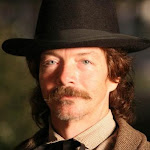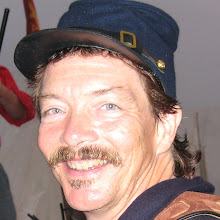
On April 12, one week prior to the Massachusetts troop deployment in Baltimore, the battle of Fort Sumter started, signaling the beginning of the American Civil War.
At the time, the states of Virginia, North Carolina, Tennessee, and Arkansas had not yet seceded from the U.S.. In addition, it was not yet known whether four other states, (Delaware, Maryland, Missouri, and Kentucky) (later known as "border states"), would remain in the Union. When Fort Sumter fell on April 13 without a single man lost, the Virginia legislature took up a measure on secession. After little debate, the measure passed on April 17. The other southern states watched with interest to see what would happen, as the secession of Virginia was important because of the state's industrial value.
Influential Marylanders, who had been supportive of secession ever since John C. Calhoun spoke of "nullification", agitated to join Virginia in leaving the Union. Their discontent increased in the days afterward while Lincoln put out a call for volunteers to serve 90 days and invade the Confederate States of America, Newly formed units were starting to be deployed with orders to begin staging in Washington, D.C.
Abraham Lincoln received only 1,100 of more than 30,000 Maryland votes cast for president in 1860. 460 newly called up Pennsylvania volunteers passed through Baltimore on April 18; however, states’ rights forces were too disorganized and surprised to do anything about it. When the next regiment came on April 19, however, they were ready.
On April 19, the Union's Sixth Massachusetts Regiment was being deployed south to Washington, D.C. through Baltimore. At that time, there was no direct rail connection between the Philadelphia, Wilmington and Baltimore Railroad's President Street Station and the Baltimore and Ohio Railroad's Camden Station (ten blocks to the west) due to ordinances prohibiting the use of steam locomotives in the inner city and the lack of union stations at the time. Rail cars that transferred between the two stations had to be pulled by horses along Pratt Street.
As the Massachusetts soldiers transferred between stations, a group of Maryland citizens attacked the train cars and blocked the route. When it became apparent that they could travel by horse no further, the troops got out of the cars and marched in formation through the city. However, the citizens followed the Massachusetts troops until they finally blocked the soldiers.
The Massachusetts had fixed bayonets and had loaded their muskets. Several soldiers fired at the civilians, and chaos immediately ensued as a giant brawl began between the soldiers, the civilians, and the Baltimore police. The citizens defended themselves against the the regiment with "bricks, paving stones, and pistols."
In the end, the soldiers got to the Camden Station, and the police were able to block the crowd from them. The Massachusetts regiment had left behind much of their equipment, including their marching band's instruments.
Four soldiers (Corporal Sumner Needham of Co I and Privates Luther C. Ladd, Charles Taylor, and Addison Whitney of Company D) and twelve civilians were killed in the riot. About 36 of the regiment were also wounded and left behind. It is unknown how many additional civilians were injured.
Sumner Henry Needham is sometimes considered to be the first Union casualty of the war, though he was killed by civilians in a city that was still part of these United States. Needham is buried in Lawrence, Massachusetts.
Ladd and Whitney are buried in Lowell, Massachusetts. Taylor was buried in Baltimore; though his grave was lost, his name appears on the Lowell Monument.
As a result of the attack on civilians in Baltimore and pro-Southern sympathies of much of the city's populace, the Baltimore Steam Packet Company also declined the same day a Federal government request to transport Union forces to relieve the beleaguered Union naval yard facility at Portsmouth, Virginia
After the April 19 riot, some small skirmishes occurred throughout Baltimore between citizens and police for the next month, but a sense of normalcy returned as the city was cleaned up. Mayor Brown and Maryland Governor Hicks implored President Lincoln to send no further troops through Maryland to avoid further confrontations.
However, as Lincoln remarked, Union soldiers were neither birds to fly over Maryland, nor moles to burrow under it.
On the evening of April 20 Hicks also authorized Brown to dispatch the Maryland state militia for the purpose of disabling the railroad bridges into the city - an act he would later deny. One of the militia captains was John Merryman, who was arrested one month later, and held in defiance of a writ of habeas corpus, which led to the case of Ex parte Merryman.
More Massachusetts troops under General Benjamin Butler arrived by ship at Annapolis on April 20. Hicks protested, but Butler (a clever politician) bullied him into allowing troops to land at Annapolis and proceed to Washington by rail via Annapolis Junction (halfway between Baltimore and Washington). Butler was then ordered to take command of this route.
There were calls for Maryland to declare secession in the wake of the riot. Governor Hicks called a special session of the state legislature to consider the situation. Since Annapolis, the capital, was occupied by Federal troops, and Baltimore was dominated by states’ rights civilians, Hicks directed the legislature to meet in Frederick. The legislature met on April 26; on April 29, it voted 53-13 against secession.
Many more Union troops arrived. On May 13, Butler sent Union troops into Baltimore and declared martial law. The mayor, city council, and police commissioner, who were states’ rights advocates and seemingly unable to maintain order, were arrested and imprisoned at Fort McHenry. Over the next several weeks, Union troops were deployed throughout the state.
The legislature's special session at Frederick continued for several weeks. Secession resolutions were submitted, but rejected in part because it was believed that the legislature did not have the power to declare secession. The legislature adjourned on August 7, planning to reconvene on September 17. However, on that day several pro-secession members were arrested by Federal troops and Baltimore police officers, and the session was canceled.
Some Southerners reacted with passion to the military actions against civilians. James Ryder Randall, a teacher at Poydras College in Pointe Coupee Louisiana but a native Marylander who had lost a friend in the miliary actions, wrote the poem, "Maryland" for the Southern cause in response to the riots.
The poem was later set to the tune of “O’ Christmas Tree”, and referred to the riots with lines such as "Avenge the patriotic gore / That flecked the streets of Baltimore." The song became known as “Maryland, My Maryland”.




















